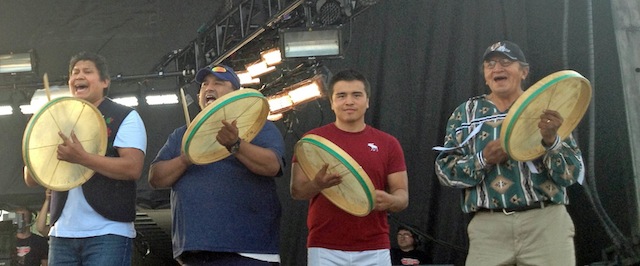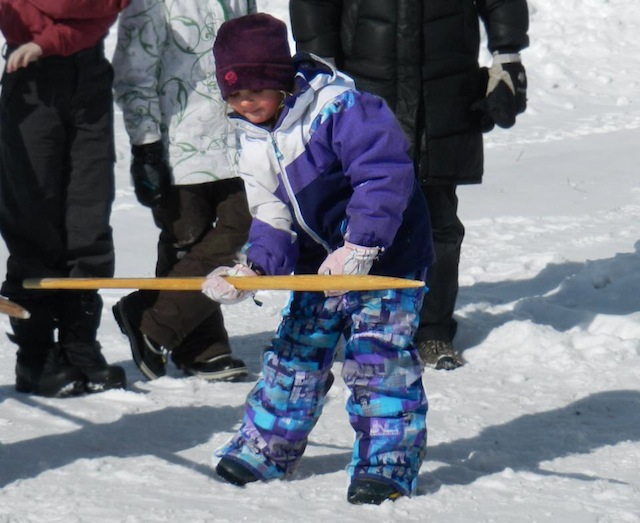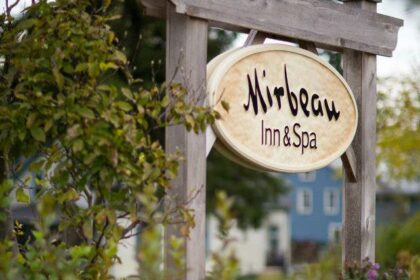
While most people envision life in northern Canada as being cold, dark and dull, for people of the Dene group of North American First Nations this is far from the truth. “Dene,” which is the Athabaskan term simply for “people,” includes the First Nation bands of Chipewyan, Tlicho, Slavey, Sathu and Yellowknives, whom the capital of the Canadian Northwest Territories are named after. First Nations refers to the various Aboriginal cultures in Canada.
The Dene have lived in arctic and boreal regions across the north for over 4,000 years. During this time, they’ve turned a frozen desert into a cultural paradise — even during the dead of winter — with their traditional music, games and food.

Music
Music is an important cultural cornerstone for any group of people. It immediately sets the tone of a scene and can bring people together to create living art in harmony with each other. The Dene are no exception to this, and are well known for their drumming abilities. Drums have long been central to this Aboriginal culture, to the extent that the steady beat of a drum can be used for medicinal healing purposes.
This isn’t to say shamans were the only ones to use the instruments; they were performed on in drumming circles during important meetings and community gatherings, where singing and dancing often accompanied them. Even during these occasions, drums were often blessed before use to ensure peace and prosperity and to channel spirit animals into the music. This is done by burning sage and allowing the smoke to waft into the drummer and their instrument.
When I attended my first Dene drumming circle, I was nervous about forgetting an important step in the process of blessing the drum; however, one of the central purposes of the drum circle is to create an open environment where everyone can feel welcome and accepted. For this reason, many of the songs are composed of simple rhythms and lyrics, making it easy for travelers and newcomers to join in. For me, this meant that my questionable rhythm and off-pitch voice weren’t at odds. I found myself quickly letting go of my nerves and belting out the “Yeee”s and “Ooooh”s of several spiritual choruses.
Dene drumming is both an exciting and calming tradition. While drumming, the emphasis is on connecting with the nearby spirit world in peace and healing.

Games
Throughout their history, the Dene relied on more than just drum ceremonies to pass the time during long Canadian winters. They also developed a series of games, which are played not only for amusement and competition, but also to improve their practical hunting skills.
Today, the Arctic Winter Games feature many Dene Games in their bi-annual tournaments. Here, northern communities come together from across North America to demonstrate their abilities in various First Nations games. Although many of these exist, here are two examples of some of the more popular Dene Games:
Snow Snake
The Snow Snake was originally designed to improve the accuracy of Dene hunters in search of caribou during the winter. Hundreds of years ago, when hunting tools didn’t possess the same levels of accuracy and exactness they do today, it was impossible for Dene hunters to get within range of a caribou — even with a bow and arrow — before it would flee. As a result, the only time caribou could be hunted was when they fell asleep on an icy lake. In this scenario, the hunter could slide a javelin along the ice for a long distance and pierce the caribou’s side, which would slow the animal down, allowing the hunter to get close enough to the animal to make a kill.
To practice developing this exact skill, the Snow Snake game was developed. This game consists of sliding a javelin — much like one used in the Olympic javelin toss — as far as possible down an icy, narrow track. The world record is currently held at close to 500 feet and requires both strength and accuracy.
While sliding a stick in a straight line seems like a simple task, even on a flat, icy surface, during my experience I found javelins are prone to twisting and turning at any available opportunity. For beginners like myself, the game is one of high concentration. Getting the javelin to stay on course for even 10 feet proved to be quite the challenge.

Dene Hand Games
Now the most widely played Dene game, the Dene Hand Games is an activity of guessing and deceit where members from one team try to guess which hand opposing players are hiding a small token in. To make things more complicated, guesses are made by using an intricate series of hand signals. In addition to the active players, each team is allowed a series of drummers to distract the opposing team’s guesser.
My first time trying out the Dene Hand Games had me facing off against another team of first-timers in a school gymnasium. Overwhelmed by the amount of signals we needed to memorize in order to properly execute our guesses, the game involved fairly little strategy and a large amount of concentration just to keep the game running smoothly After a few rounds however, the group began to get into the swing of things and our guesses became increasingly animated. After correctly guessing which hand everyone was hiding his or her token in with a giant bear-claw sweeping motion, I started to feel like I was getting the hang of the game, despite the guess being attributed to sheer dumb luck.
It wasn’t until the referee commented to reveal all of the patterns he noticed throughout the course of our game that the intensity to which it’s played became apparent. Without even realizing it for myself, he told me 90% of the time I would hide my piece in my left hand, since I was so proud of being left-handed. Never having spoken to him before, I was baffled at how much the referee already knew about me. The game was clearly about much more than luck and fun motions; it was coated in deep layers of strategy.

Food
Food can be scarce in regions where for half the year, most animals either migrate south or enter a deep hibernation and any remnants of vegetation are hidden under layers of snow; however, the Dene are a resourceful people and have found ways to turn “barren” lands into fruitful Edens with several delicious dishes.
Fish
Dene territory passes through the Mackenzie and Slave Rivers, along with Great Slave Lake, among many others. As a result, the Dene have access to countless fishing locations and species like whitefish and arctic char have become dietary staples.
To give a full spectrum of fish flavor, whitefish are known for being flaky and having a mild fish taste, while arctic char possess a strong, fatty, salmon-like taste. Both types can be enjoyed grilled over an open fire, but in order to preserve them during the winter, they can also be salted, dehydrated and made into dry fish. Here, they would be stored in a special dry cache to keep them safe from bears and to preserve their flavor.
Today, fish have become the staple dish at many community events and gatherings. In the Northwest Territories of Canada, Aboriginal Day is celebrated each year with community-wide fish fries across the territory. Functions like this provide the perfect opportunity to sample authentic northern seafood.

Bannock
Just mention the word “bannock” to any Dene child (or child at heart) and you’ll see their eyes widen and mouth drool. Although the dish consists mainly of flour and water, the fact it’s prepared by toasting it over an open fire — much like S’mores — turns it from a meal into a fun-filled activity. Filling the pastry with honey butter after it’s been cooked also adds a delicious kick of flavor into the mix.
Enjoyed this post? Pin it for later!
About The Author
Currently working in a museum, Judi Zienchuk has lived everywhere from Southeast Asia to Northwestern Canada. She loves travel, longboarding and coffee flavored ice cream. To get more personal, check out her blog, Travvel Sized.
Latest posts by Judi Zienchuk (see all)
- 5 Common Travel Practices That Are Detrimental For The Environment (And How You Can Easily Change Them) - Oct 7, 2017
- Gingerbread: History, Traditions And Where To See The World’s Sweetest Artwork - Dec 4, 2015
- The Dark Side Of Easter: Child Slave Labor And How To Source Ethical Chocolate This Holiday - Mar 16, 2015
- Tips For Giving Your Trip A Responsible Makeover - Mar 6, 2015
- Going Local In Sumatra, Indonesia - Oct 21, 2014







